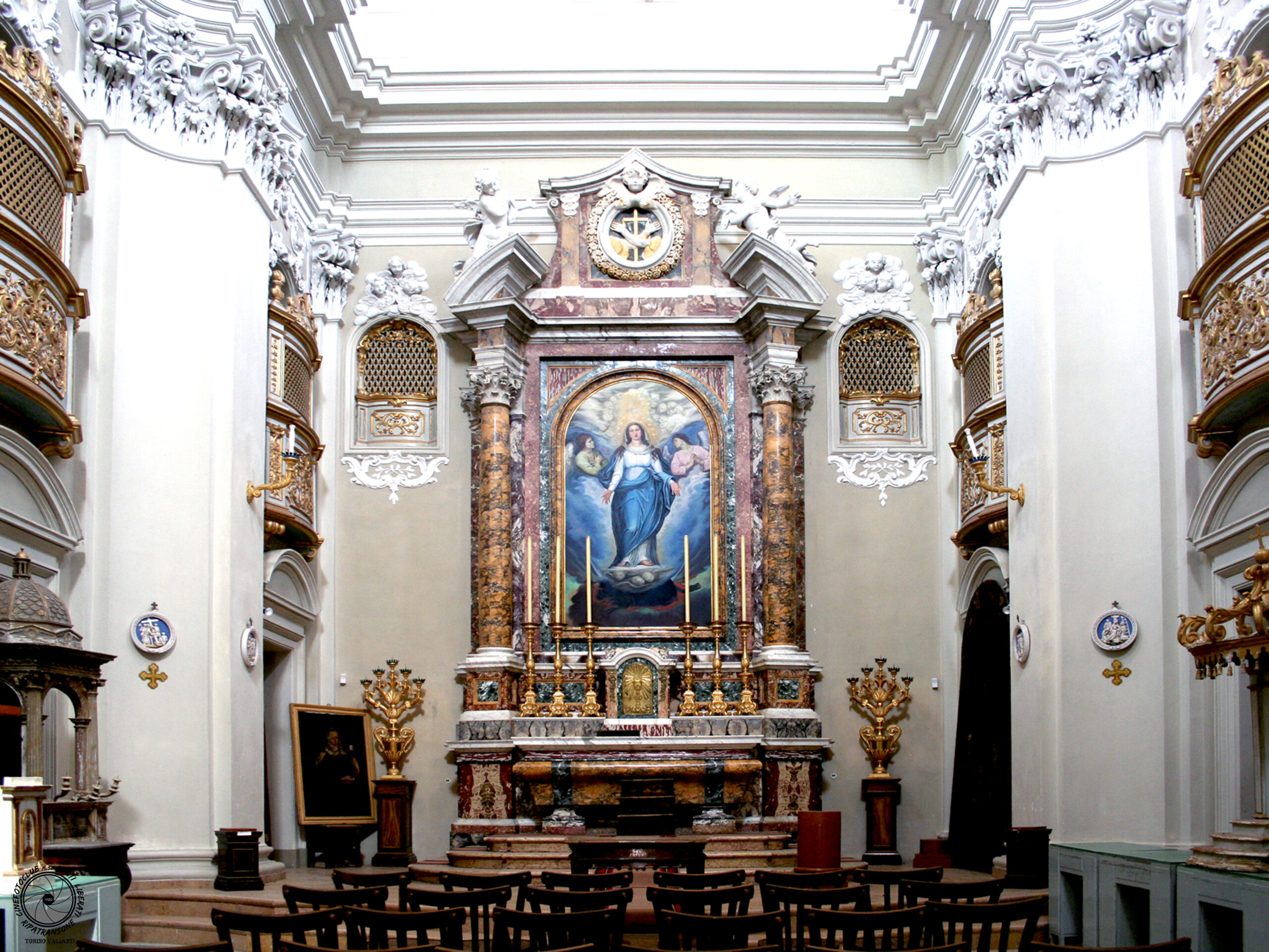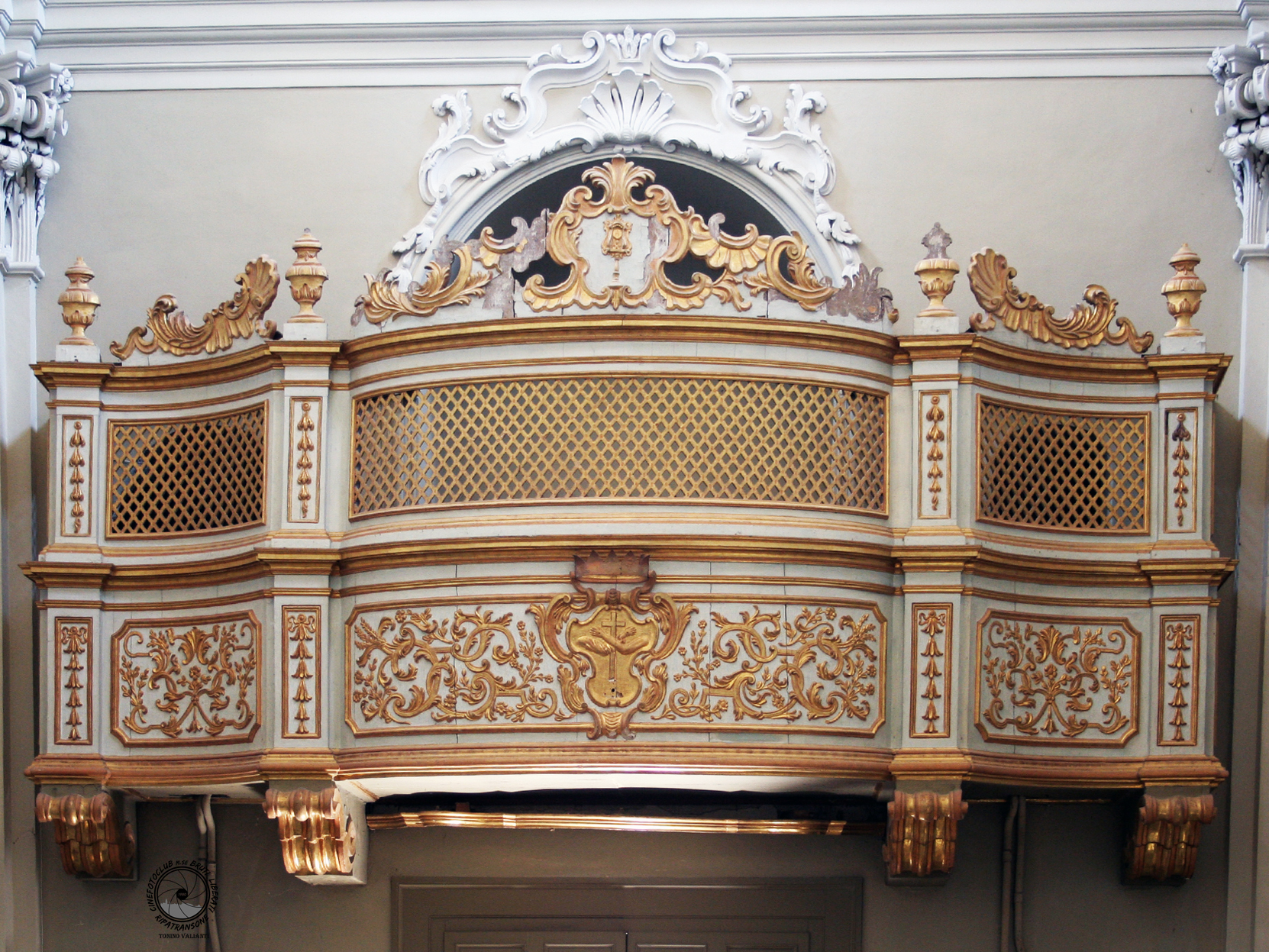The Church of St. Clare was built by the Poor Clare Nuns in the years 1750-53 and was consecrated in 1754.
The façade is elegant and slender, as is the slender sandstone portal; the single-nave interior is rich in momentum and grace, with pilasters adorned with beautiful Corinthian capitals; even more beautiful and well-preserved are the stuccoes and the nine gilded grilles; the high altar, the most valuable in the city, is original in that it is entirely covered with irregular, polychrome marble tesserae; the altarpiece, the Immaculate Madonna (1960s), by Michelangelo Bedini, who also painted the two canvases of the side altars: St. Joseph with the Child Jesus (right), Sacred Heart of Jesus (left). 20th century), is the work of Michelangelo Bedini, also the author of the two canvases of the side altars: St. Joseph with Baby Jesus (right), Sacred Heart of Jesus (left); on the cymatium of the high altar is the coat of arms of the Franciscan Orders, on the sides, two angels (sculptures); another statue, St. Francis, is placed in the niche above; on the last arch of the vault is the epigraph: "D.O.M. In honorem S. Clarae." The 14 Stations of the Cross, majolica medallions in imitation of the Della Robbia style, were purchased in Rome in the 1960s, a period when the church was restored and donated by Bishop Bishop Vincenzo Radicioni. Since April 1, 1999, it has been the worthy (albeit temporary) home of the Bishop's Museum of Sacred Art in Ripatransone, one of the eight Sistine Museums of the Piceno, set up within the Diocese of San Benedetto-Ripatransone-Montalto. The following can be admired there: vestments, reliquaries (half-bust and monstrance), silver liturgical objects, especially from the Baroque period; also: two canvases depicting Saint Clare, probable works by the Ascolan Nicola Monti (173695), statuettes of devotional art, three specimens of "Cartegloria," one of which in carved and gilded wood, is perhaps the most beautiful among those preserved in churches throughout the entire diocese. Surrounding it is the complex of the Episcopal Seminary, consisting of the buildings on Corso Vittorio Emanuele II included between house numbers 95 and 99, the Church of Santa Chiara, and the long building overlooking Via Duchi d'Atri, all made of bricks, designed by Giuseppe Rossetti (18th cent.).
Church of Santa Chiara
Former episcopal seminaryadmin2023-05-14T09:43:34+02:00

